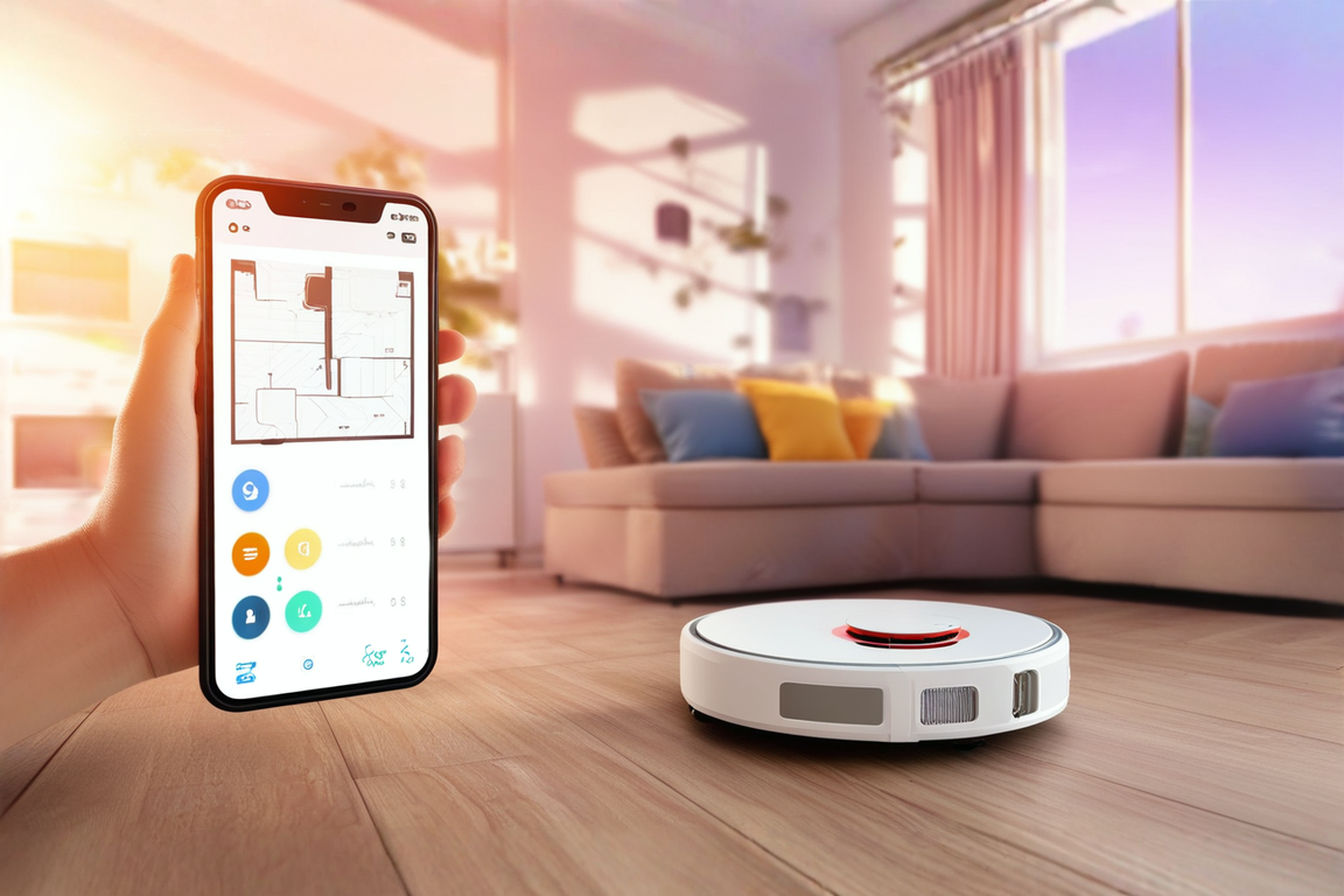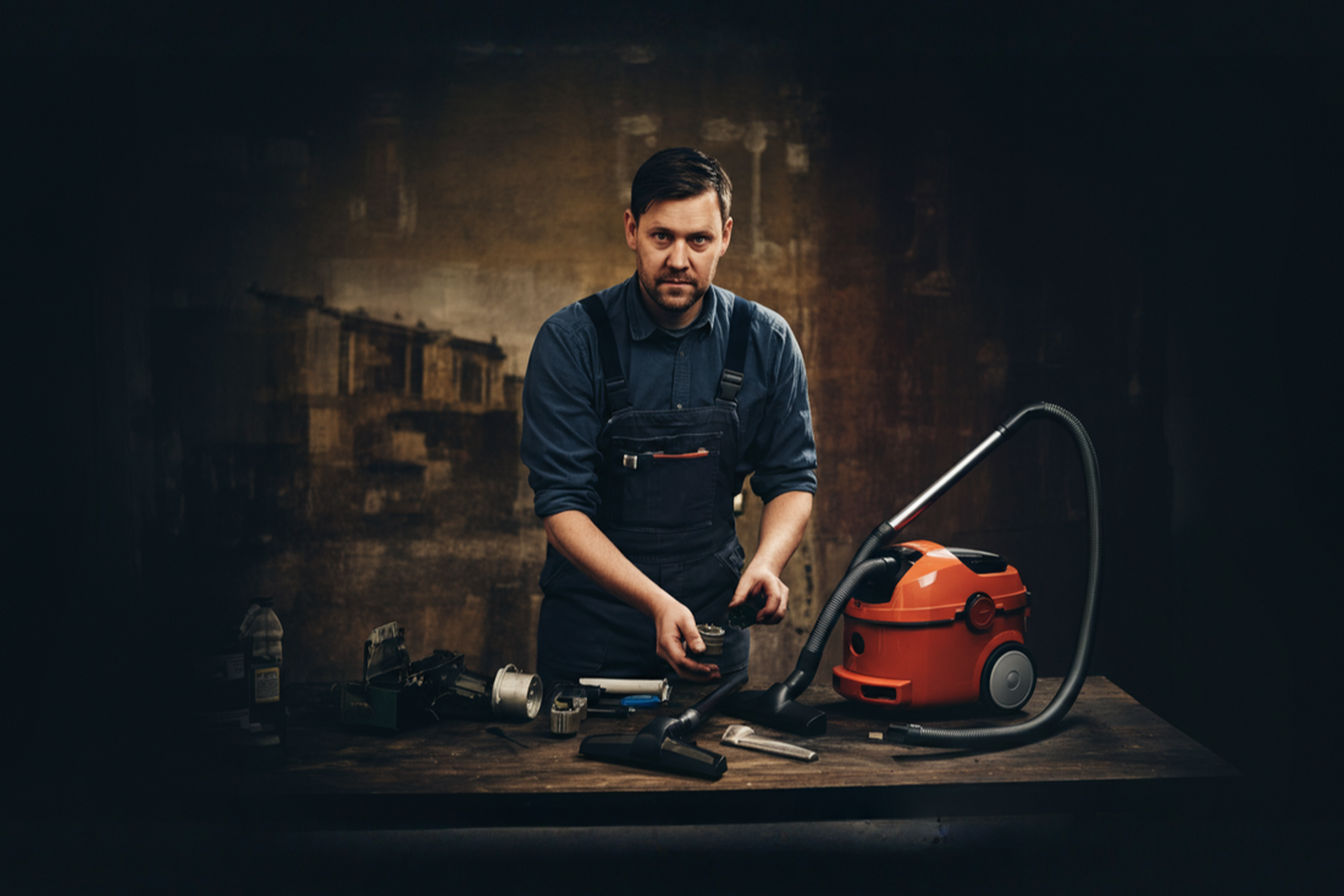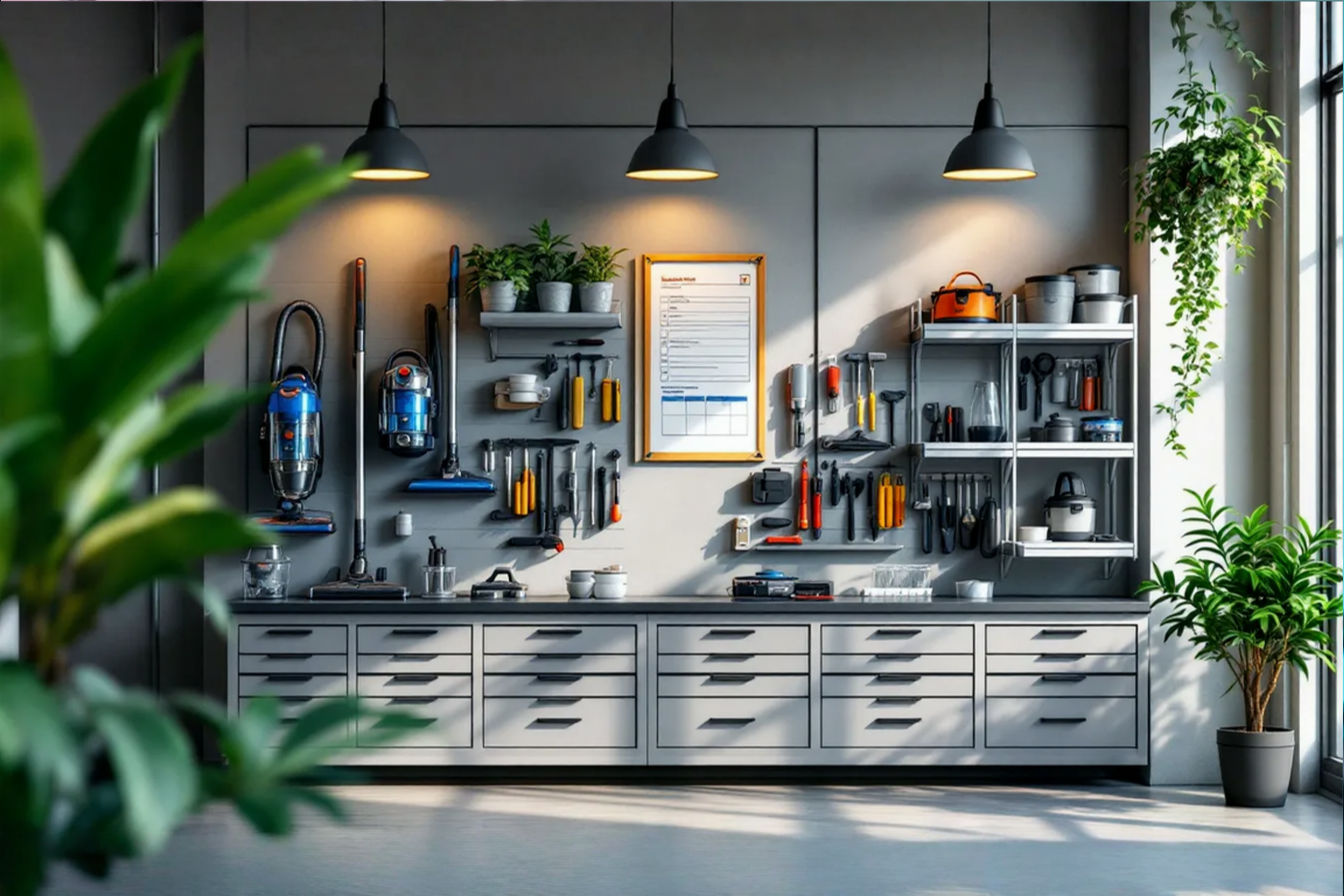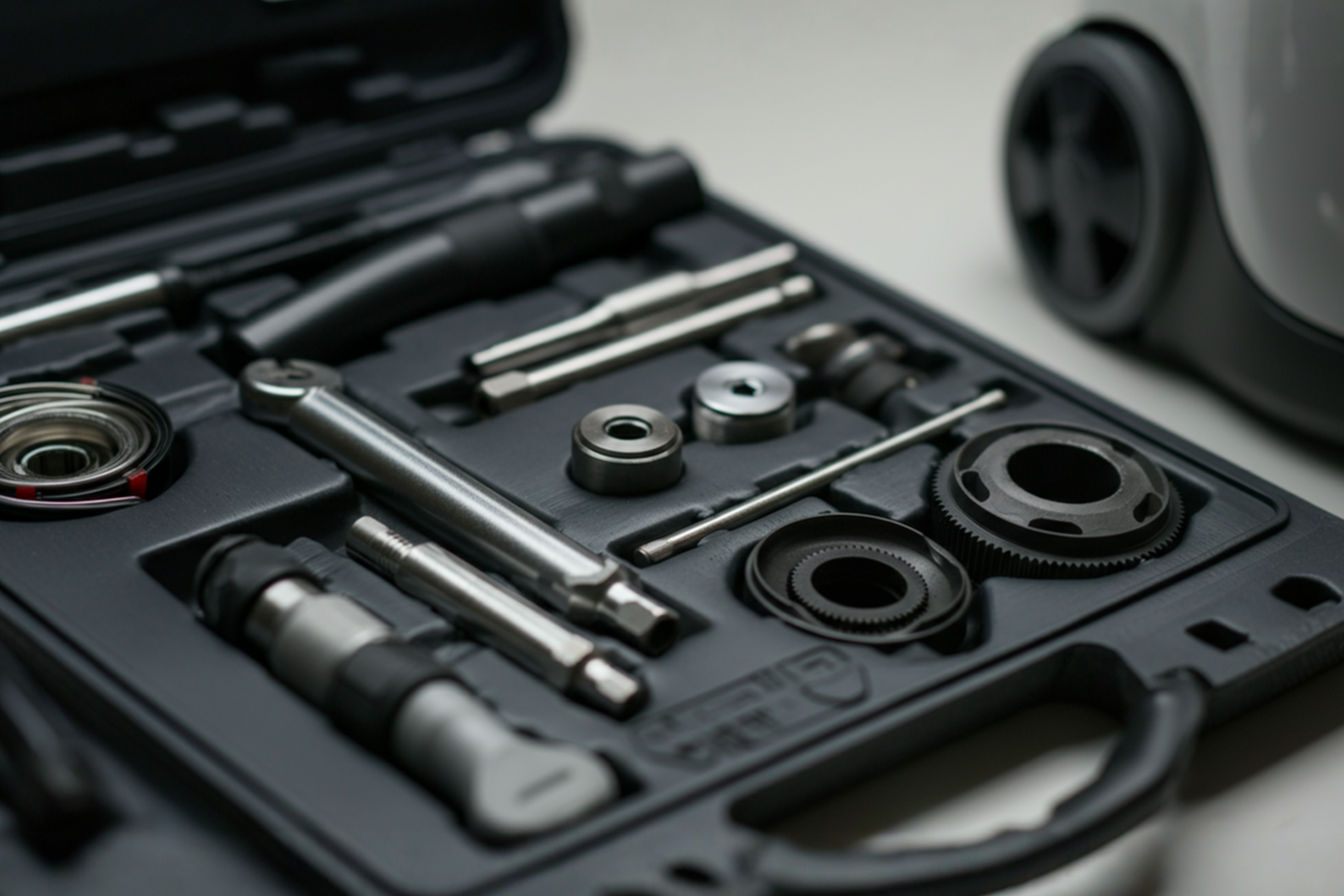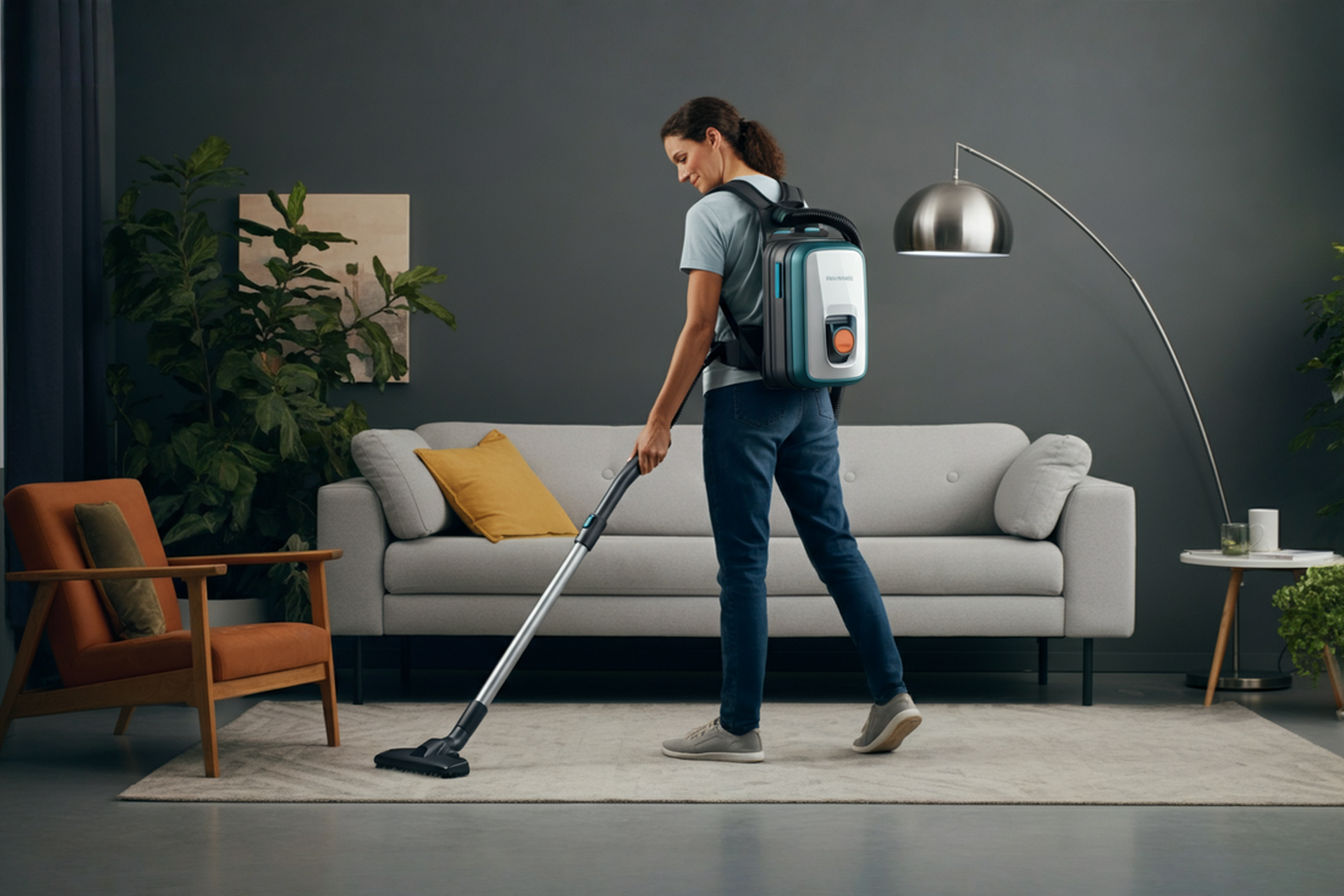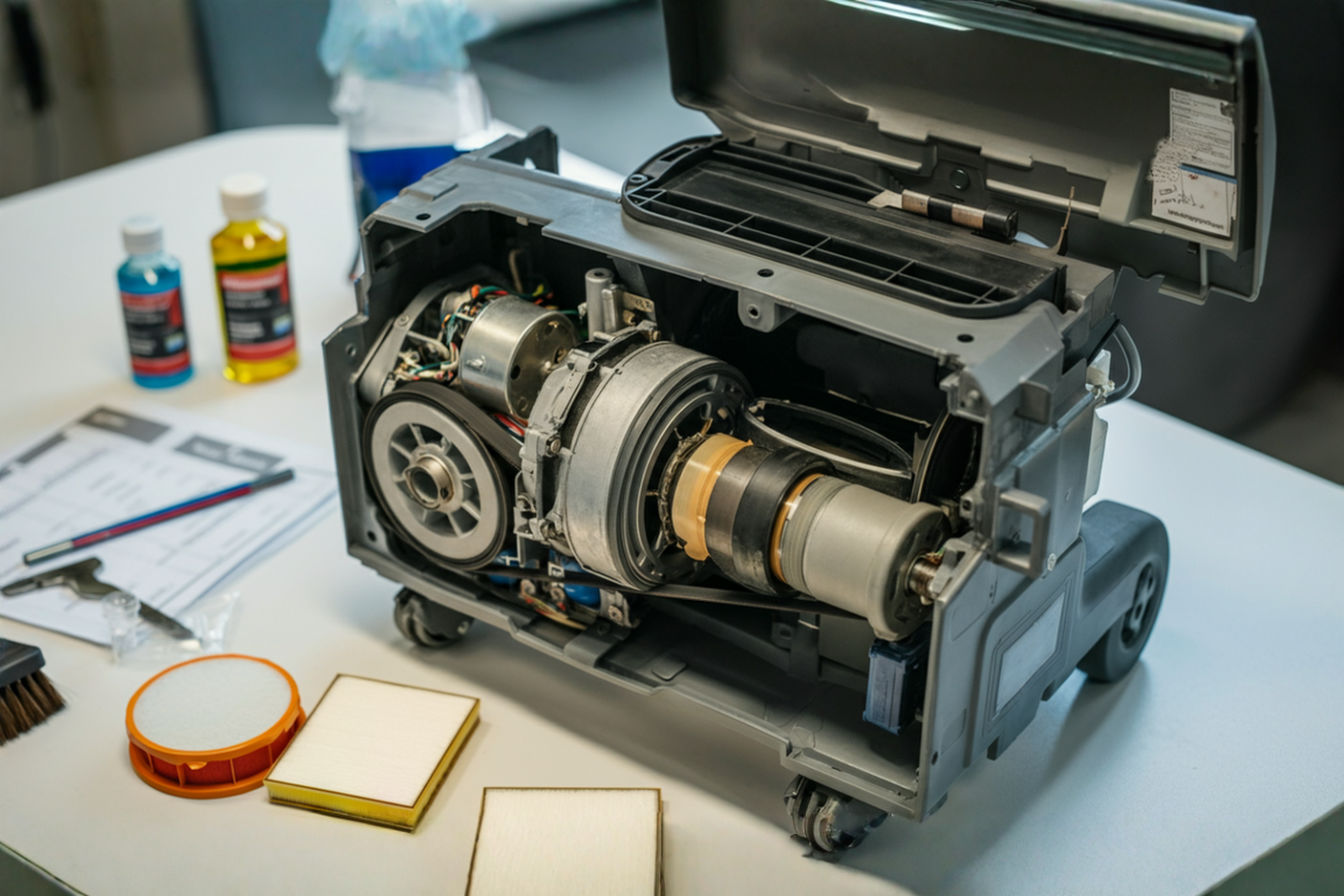Occupancy-Aware Cleaning: Using Home Sensors to Optimize Vacuum Timing
Learn how modern smart homes use occupancy detection to run vacuum cleaners only when you’re away, saving energy and reducing disruptions while keeping your home cleaner than ever.
This post may contain affiliate links. If you make a purchase through these links, we may earn a commission at no additional cost to you.
The modern smart home represents a significant advancement in how we interact with our living spaces. Among these innovations, occupancy-aware cleaning systems have emerged as a solution to one of the most persistent household dilemmas: when to run the vacuum. Traditional vacuum scheduling often results in cleaners operating while residents are home, creating noise disturbances and obstacles, or running unnecessarily in already clean areas. This inefficiency wastes energy and reduces the lifespan of your cleaning devices.
Home sensors change this dynamic entirely by enabling cleaning systems to detect when rooms are occupied and adjust their operation accordingly. These intelligent systems can determine the optimal times to clean based on your actual presence patterns rather than rigid schedules. The integration of occupancy detection with automated vacuum systems represents the next evolution in smart home technology – one that adapts to your lifestyle rather than requiring you to adapt to it.
The benefits extend beyond mere convenience. Occupancy-aware cleaning systems enhance efficiency, reduce energy consumption, minimize disruptions, and ultimately provide a more thorough cleaning experience. This comprehensive guide explores how these technologies work together to create a smarter, more responsive home cleaning environment.
Understanding Occupancy Detection in Smart Homes
Occupancy detection forms the foundation of any presence-aware cleaning system. These detection mechanisms work by continuously monitoring spaces to determine whether humans are present in a room or area.
Types of Occupancy Sensors
Home occupancy detection relies on several different sensing technologies, each with unique advantages:
Passive Infrared (PIR) Motion Sensors detect changes in infrared radiation, which occurs when a warm body moves through the sensor’s field of view. These sensors excel at detecting movement but may miss stationary occupants. They remain among the most affordable and widely deployed options for basic occupancy detection, consuming minimal power while providing reliable motion tracking.
Ultrasonic Sensors emit high-frequency sound waves and measure how they bounce back from objects in the environment. Unlike PIR sensors, ultrasonic detection can identify even subtle movements like typing or page-turning, making them more sensitive for stationary occupancy detection. Their ability to “see” around obstacles makes them ideal for complex room layouts.
Microwave Sensors operate similarly to ultrasonic sensors but use electromagnetic waves instead of sound. These waves can penetrate thin walls and partitions, allowing for more comprehensive coverage but potentially reducing privacy between adjacent spaces. Their sensitivity to even minor movements makes them excellent for reliable occupancy confirmation.
Camera-Based Systems utilize computer vision to identify human presence. Advanced versions employ AI algorithms to distinguish between people, pets, and other moving objects. While offering the most detailed occupancy information, these systems raise significant privacy concerns and require more processing power than simpler sensor types.
Ambient Sensing Methods monitor environmental factors like light levels, sound patterns, temperature fluctuations, and even CO2 concentrations to infer occupancy indirectly. These passive approaches offer privacy advantages but provide less definitive occupancy data than direct sensing methods.
Integration with Smart Home Ecosystems
Modern occupancy sensors don’t operate in isolation. They communicate with central smart home hubs through various protocols including:
- WiFi for high-bandwidth sensors like cameras
- Zigbee or Z-Wave for low-power, mesh-networked sensors
- Bluetooth Low Energy (BLE) for direct device-to-device communication
- Matter protocol for cross-platform compatibility
This interconnectivity allows occupancy data to trigger actions across multiple systems. Your home’s brain – whether it’s SmartThings, Home Assistant, Apple HomeKit, Google Home, or Amazon Alexa – interprets this sensor information and communicates with compatible vacuum systems to coordinate cleaning activities based on real-time occupancy conditions.
The Technology Behind Smart Vacuum Systems
The evolution of vacuum technology has progressed from manual upright models to sophisticated robotic systems capable of autonomous navigation and operation. Today’s smart vacuum landscape represents decades of development.
Evolution of Robotic Vacuum Cleaners
The journey began with basic programmable vacuums that followed random patterns until encountering obstacles. These early models lacked true intelligence and often missed areas or cleaned the same spots repeatedly. Modern systems have transcended these limitations through advanced navigation and connectivity.
Contemporary smart vacuums leverage several technologies that make them ideal candidates for occupancy-aware operation:
LIDAR and camera-based mapping enables precise environmental awareness, allowing vacuums to create detailed floor plans of your home. This spatial understanding facilitates efficient cleaning routes and the ability to target specific zones when needed.
Advanced sensors including cliff detection, obstacle recognition, and dirt level monitoring help these devices navigate complex environments safely while prioritizing areas that need more attention.
Connectivity options ranging from WiFi to Bluetooth allow seamless integration with smart home systems, enabling them to receive occupancy data and adjust operations accordingly.
Programmable cleaning modes provide flexibility in how thoroughly and aggressively the vacuum operates, allowing for quick maintenance cleaning when time is limited or deep cleaning during extended absences.
Communication Protocols for Integration
The effectiveness of occupancy-aware cleaning depends heavily on how well your vacuum communicates with your broader smart home ecosystem. Several key protocols facilitate this integration:
HTTP/REST APIs allow direct communication between smart home platforms and vacuum systems from manufacturers like iRobot, Roborock, and Ecovacs.
MQTT messaging provides lightweight, real-time communication between sensors and cleaning devices, ideal for triggering immediate responses to occupancy changes.
Home automation platforms like Home Assistant, SmartThings, and Hubitat can serve as intermediaries, translating between different device ecosystems to coordinate actions based on occupancy status.
AI and Machine Learning Applications
Artificial intelligence significantly enhances occupancy-aware cleaning through:
Pattern recognition algorithms that identify your household’s routines, anticipating when spaces will likely be vacant and scheduling cleaning accordingly.
Adaptive routing that adjusts cleaning paths based on historical occupancy data, spending more time in frequently used areas while quickly maintaining rarely occupied spaces.
Object recognition capabilities that distinguish between temporary obstacles and permanent fixtures, allowing the system to clean effectively while navigating around unpredictable household items.
This intelligence transforms cleaning from a simple timed activity to an adaptive service that responds to your household’s unique patterns.
Benefits of Occupancy-Aware Cleaning Systems
The advantages of linking occupancy detection with automated vacuum systems extend far beyond basic convenience, offering meaningful improvements to daily life.
Enhanced Cleaning Efficiency
When cleaning systems understand occupancy patterns, they operate more efficiently in several ways. Vacuums can focus their efforts on high-traffic areas that genuinely need attention while spending less time in rarely used spaces. This targeted approach ensures the most effective use of cleaning resources.
The system can also schedule deep cleaning sessions during extended absences, such as workdays or vacations, taking advantage of these opportunities to perform thorough maintenance without time constraints. This precision eliminates the common problem of vacuums operating in already clean areas merely because they’re following a rigid schedule.
Energy and Resource Optimization
Reduced power consumption represents a significant benefit of occupancy-aware systems. By operating only when necessary, these systems minimize energy usage compared to fixed schedules that might run regardless of actual cleaning needs. Many households report 20-30% reductions in cleaning-related energy consumption after implementing occupancy-aware systems.
Extended equipment lifespan naturally results from more efficient usage patterns. Components experience less unnecessary wear when vacuums operate only when needed rather than on arbitrary schedules. This targeted use extends the service life of brushes, motors, filters, and batteries – the most expensive components to replace in robotic vacuum systems.
Improved Household Harmony
Perhaps the most immediately noticeable benefit comes from minimized disturbances to daily activities. The elimination of vacuum noise during important calls, family meals, or relaxation time significantly improves quality of life. The system ensures cleaning happens during natural absences or when noise disruption would be minimal.
This consideration extends to special circumstances like napping children, work-from-home conference calls, or visitor entertainment. Occupancy-aware systems can recognize these situations and postpone cleaning until more appropriate times, adapting to the dynamic nature of household activities rather than disrupting them.
Air Quality Benefits
Strategic timing of vacuum operations can substantially impact indoor air quality. By scheduling cleaning during absences, any airborne particles disturbed during the vacuuming process have time to settle or be filtered by your HVAC system before you return. This approach particularly benefits allergy sufferers, who might otherwise experience symptoms triggered by the temporary increase in airborne particulates during cleaning.
Setting Up an Occupancy-Aware Cleaning System
Creating an effective occupancy-aware cleaning system requires thoughtful selection and configuration of both hardware and software components.
Essential Hardware Components
The foundation of any occupancy-aware system includes:
Occupancy sensors strategically placed throughout your home. For most residences, a combination of sensor types provides optimal coverage. PIR motion sensors work well in hallways and transitional spaces, while ultrasonic or microwave sensors offer better detection in living areas where people may remain relatively still for extended periods.
Compatible smart vacuum with WiFi connectivity and API support. Leading options include:
- iRobot Roomba i7/i8/S9 series with Home app integration
- Roborock S7/S8 series with robust zoning capabilities
- Ecovacs Deebot models with multi-floor mapping
- Neato Botvac connected series with D-shaped design for corner cleaning
Smart home hub or controller that can collect sensor data and communicate with your vacuum system. Popular options include Samsung SmartThings, Home Assistant, Hubitat Elevation, or even voice assistants with routines capability like Amazon Alexa or Google Home.
Reliable home network with sufficient coverage throughout cleaning areas. Mesh WiFi systems often provide the consistent connectivity needed for reliable communication between components.
Software and Integration Options
Several approaches exist for connecting occupancy data to vacuum operations:
Manufacturer apps from companies like iRobot, Roborock and Ecovacs offer limited direct integration with some sensor systems. These native solutions provide the most straightforward setup but often lack customization options.
Smart home platforms like Home Assistant, SmartThings, or Apple HomeKit can serve as centralized automation hubs, creating rules that trigger vacuum activity based on occupancy states. These platforms offer extensive customization but require more technical knowledge to configure.
Third-party automation services such as IFTTT (If This Then That) or Tasker can bridge systems that don’t natively communicate, though these sometimes introduce latency that may reduce responsiveness.
Custom solutions using Node-RED or similar automation tools allow for highly specialized workflows but demand programming knowledge and ongoing maintenance.
Configuration Process
A typical setup follows these steps:
- Sensor placement analysis to identify optimal locations for occupancy detection throughout your home. Consider traffic patterns, furniture placement, and typical activities in each room.
- Sensor installation and testing to ensure reliable occupancy detection. Verify detection zones and adjust sensitivity to minimize false positives or missed occupancy events.
- Vacuum mapping and zone configuration to create defined cleaning areas that can be activated independently based on occupancy status.
- Rule creation within your chosen platform to establish the logic for when cleaning should occur. Typical rules include:
- Start cleaning when specific zones have been unoccupied for X minutes
- Pause cleaning when occupancy is detected in the active zone
- Resume cleaning when the area becomes vacant again
- Prioritize cleaning recently vacated, high-traffic areas
- Testing and refinement to ensure the system responds appropriately to various occupancy scenarios.
Optimizing Vacuum Scheduling Based on Occupancy Patterns
The true power of occupancy-aware cleaning emerges when you move beyond simple vacancy triggers to sophisticated scheduling based on household patterns.
Analyzing Household Traffic Patterns
Smart systems can build occupancy profiles by analyzing data over time, revealing patterns such as:
Predictable vacancies like workdays when entire areas remain empty for hours, creating ideal deep-cleaning windows.
High-traffic periods when specific zones see intensive use, indicating when cleaning would be most beneficial but least convenient.
Transitional times between activities when brief cleaning opportunities might exist, perfect for maintenance touch-ups.
Consistent low-occupancy zones that require less frequent cleaning attention, allowing the system to prioritize more heavily used areas.
This analysis can occur manually by reviewing sensor logs or automatically through platforms that support pattern learning and visualization.
Creating Zone-Based Cleaning Strategies
Rather than treating your home as a single cleaning unit, sophisticated systems divide it into functional zones with distinct occupancy characteristics:
High-priority zones like kitchens and entryways accumulate debris quickly and benefit from frequent, opportunistic cleaning whenever vacancies occur.
Medium-priority areas such as living rooms may need regular cleaning but can usually wait for scheduled vacant periods.
Low-priority spaces like guest rooms or formal dining areas used infrequently can be cleaned during major vacancies or on less frequent schedules.
This zoned approach ensures cleaning resources concentrate where they provide the greatest benefit while minimizing unnecessary operation in clean or unused areas.
Adjusting for Variations and Exceptions
Effective systems account for deviations from normal patterns:
Seasonal changes like summer vacations, holiday periods, or school breaks significantly alter typical occupancy patterns and require schedule adjustments.
Special events such as hosting guests or working from home necessitate temporary modifications to cleaning routines.
Weather impacts often influence occupancy, with rainy days typically involving more indoor time and potentially more tracked-in debris requiring cleaning.
Advanced systems can recognize these variations through manual overrides, calendar integration, or AI that detects pattern disruptions and adapts accordingly.
Real-World Applications and Case Studies
Occupancy-aware cleaning systems adapt to diverse living environments, each with unique requirements and benefits.
Family Home Implementation
The Johnson family installed an occupancy-aware system in their busy household with two working parents and three school-aged children. Their implementation features:
- Morning cleaning of common areas that activates after school drop-off
- Kitchen spot cleaning that runs automatically after mealtimes once the space remains vacant for 15 minutes
- Bedroom cleaning during school hours
- Basement playroom cleaning that triggers only after detecting an hour of vacancy, typically after bedtime
The family reports significantly reduced cleaning interruptions and consistently cleaner floors despite their hectic schedule. The system’s ability to identify and utilize naturally occurring vacancy windows eliminated the need for manual vacuum scheduling entirely.
Apartment Dweller Solutions
Urban apartment residents face different challenges, particularly with noise concerns for neighbors and compact living spaces. Emily, a marketing professional living in a one-bedroom apartment, implemented a streamlined system that:
- Restricts vacuum operation to 8am-8pm to respect building quiet hours
- Prioritizes cleaning her main living area whenever she leaves for more than 30 minutes
- Automatically cleans her entire apartment during her twice-weekly evening yoga classes
- Suspends all cleaning operations when it detects she’s working from home on video calls
This targeted approach ensures her limited space remains consistently clean without the vacuum ever interrupting her work or relaxation time.
Pet Owner Considerations
Households with pets benefit tremendously from occupancy-aware cleaning due to continuous shedding and tracked debris. The Martinez family, with two large dogs, configured their system to:
- Clean entry areas and pet beds daily during typical work hours
- Perform whole-home deep cleaning three times weekly during extended absences
- Run special “spot cleaning” programs in recently vacated areas where pets frequently lounge
- Avoid operating near the dogs’ feeding station during typical meal times
This approach has dramatically reduced pet hair accumulation while ensuring the vacuum never startles their animals during operation.
Challenges and Limitations
While occupancy-aware cleaning offers significant advantages, several challenges must be acknowledged and addressed.
Privacy Considerations
The continuous monitoring required for occupancy detection raises legitimate privacy concerns:
Data collection scope should be carefully limited to occupancy status only, avoiding unnecessary collection of identifying information or activity details.
Local processing approaches that keep occupancy data within your home network rather than sending it to cloud services provide stronger privacy protection.
Transparent operation ensures all household members understand what information is being collected and how it’s being used to control cleaning systems.
Camera-free options like PIR and ultrasonic sensors offer presence detection without the privacy implications of video monitoring.
Technical Hurdles
Implementation challenges often include:
Interoperability issues between different manufacturers’ ecosystems may require middleware solutions or limit integration possibilities.
Sensor limitations including false positives from pets, HVAC-induced movement, or sunlight changes can trigger inappropriate cleaning cycles if not properly configured.
Network reliability problems can disrupt communication between system components, potentially resulting in missed cleaning opportunities or inappropriate vacuum activation.
Complex home layouts with multiple levels, unusual floor plans, or areas with limited sensor coverage may create detection blind spots that compromise system effectiveness.
Balancing Automation with Control
Finding the right equilibrium between automatic operation and user override capabilities remains crucial:
Manual override mechanisms should allow immediate suspension of automatic cleaning when necessary for unexpected situations.
Temporary schedule adjustments must be simple to implement for special events or changes in routine without requiring complete system reconfiguration.
Notification systems that alert household members to planned or in-progress cleaning activities provide awareness without requiring constant attention to the system’s operation.
Graduated autonomy allows users to start with basic automation and gradually increase system independence as comfort and trust develop.
Future Trends in Occupancy-Aware Cleaning
The integration of occupancy detection and automated cleaning continues to evolve rapidly, with several promising developments on the horizon.
Advanced Sensor Fusion
Next-generation systems will combine multiple sensing technologies to create more nuanced occupancy awareness:
Thermal imaging capabilities will distinguish between humans, pets, and inanimate heat sources for more accurate occupancy determination.
Acoustic analysis using advanced algorithms can identify specific activities through sound patterns, allowing cleaning systems to recognize appropriate intervention times.
Pressure and vibration sensing through smart flooring solutions will provide definitive occupancy data without requiring wall-mounted or visible sensors.
These combined approaches will create a more comprehensive understanding of not just whether spaces are occupied, but how they’re being used.
Predictive Cleaning Models
Machine learning will enable truly anticipatory cleaning systems that:
Forecast occupancy patterns based on historical data, calendar information, and even weather predictions to optimize cleaning schedules days in advance.
Identify correlation factors between specific activities and cleaning needs, such as cooking sessions that typically require kitchen floor cleaning afterward.
Adapt to seasonal variations automatically by recognizing changes in household patterns without requiring manual reconfiguration.
Personalize cleaning intensity based on observed preferences and feedback, such as more thorough cleaning before hosting events or more frequent maintenance in areas used by allergy sufferers.
Ecosystem Integration
Occupancy-aware cleaning will increasingly function as part of broader smart home systems:
Coordinated device scheduling will ensure vacuums operate in harmony with other home systems, such as running while smart thermostats are in away mode or after cooking appliances have completed food preparation.
Voice assistant integration will allow natural language adjustments to cleaning plans and schedules without requiring app interaction.
Health and wellness connections may link cleaning activities to air quality monitoring, allergy forecasts, or even health tracking data to provide more targeted environmental management.
Sustainability optimization features will schedule cleaning during renewable energy availability or lower electrical demand periods, reducing environmental impact.
Conclusion
Occupancy-aware cleaning represents the convergence of sensor technology, artificial intelligence, and robotic systems to create a more intelligent approach to home maintenance. By understanding when and how spaces are used, these systems transform cleaning from an intrusive chore into an invisible service that maintains your environment without disrupting your life.
The primary benefits—enhanced cleaning efficiency, energy conservation, minimized disturbances, and improved air quality—deliver meaningful improvements to daily living. While challenges related to privacy, technical implementation, and balancing automation with control remain, continuing innovations address these concerns while expanding system capabilities.
As you consider implementing an occupancy-aware cleaning system, begin with a realistic assessment of your household’s patterns and needs. Start with basic integration between occupancy sensors and your existing smart vacuum, then gradually expand capabilities as you become comfortable with the system’s operation. This progressive approach allows you to build a solution tailored to your specific environment while maintaining appropriate control.
The future of home cleaning lies not in more powerful vacuums or stricter schedules, but in smarter systems that understand and adapt to how you actually live in your space. Occupancy-aware cleaning represents a significant step toward the truly responsive home—one that maintains itself quietly and efficiently while you focus on living your life.

